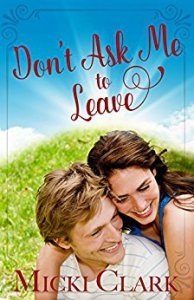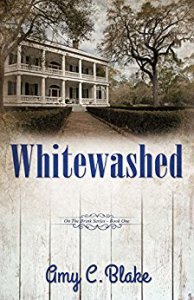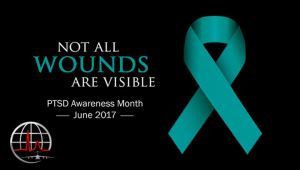How I Write: The Plantsing Process
[image error] One of the most frequent questions that I am asked about writing, both from my high school students and from those that have read my novel, is “how do you get started writing”? It’s a good question (and a very personal question) since if you asked forty authors, you’d probably get thirty-eight responses. There are two basic schools of thought: planning and “pantsing”. Me, personally? I’m a plantser. Let me explain.
Most of the people who know me think I’d be a planner. I like things to be organized and in their place. I use color coordination in my classroom (each class is assigned a color, and their turn-in tray, their returned work, their folders, their paper clips, etc. are all that color). I once had my closet organized by length of sleeve, style, and color of garment, although I’ve relaxed on that somewhat.
However, I’ve found that for me, obsessively planning the plot of a novel is actually rather destructive. Characters won’t behave themselves and do what I want. They have minds of their own, and when I try to write them into a situation it just doesn’t work.
Author JK Rowling revealed that once she had a major issue with the planning of a novel, as seen in this excerpt from a 2000 interview with Entertainment Weekly:
Was this the hardest book you’ve had to write so far?
JKR: Easily.
Why?
JKR: The first three books, my plan never failed me. But I should have put that plot under a microscope. I wrote what I thought was half the book, and “Ack!” – huge gaping hole in the middle of the plot. I missed my deadline by two months. And the whole profile of the books got so much higher since the third book; there was an edge of external pressure.
And what exactly was that gaping hole all about?
JKR: I had to pull a character. There you go: “the phantom character of Harry Potter.” She was a Weasley cousin [related to Ron Weasley, Harry’s best friend]. She served the same function that Rita Skeeter [a sleazy investigative journalist] now serves. Rita was always going to be in the book, but I built her up, because I needed a kind of conduit for information outside the school. Originally, this girl fulfilled this purpose.
Of course, that’s more likely to happen to those who write in the other major writing style, “pantsing”, so called for the author’s tendency to write “by the seat of their pants”, so to speak.
Pantsing, quite frankly, terrifies me. It’s like getting in the car for a road trip and just pointing the car down the driveway with nary a destination in mind, just ambling along until something interesting happens. However, there’s something to be said for letting a story develop organically.
That’s why I do a combination of the two (and honestly, I think most writers are the same). When I start a manuscript, I write out a document that ends up being anywhere from five to ten pages in length and I generally tell the story as if I were summarizing it. Then, I take that summary and chunk it up. Can I get 25 – 30 chapters out of it? If not, I go back and dream up another plot twist (or two).
When I have the chunks identified, I create a Google Doc for each chapter and paste the sentences for that chunk at the top. I use those four to five sentences as an inspiration for the chapter, a general destination, but the actual chapter happens pretty fluidly.
What I like about writing in this style is the ease with which I can come back to the manuscript. I’m a full-time teacher and a mom of three kids. Life is busy. I don’t often have hours or days to devote to writing, but this way, I can drop in on a chapter, write it, and move on. Later, when the chapters are finished, I paste them in one document and start working on continuity and flow.
Are you an author? How do you create your work?
Latest News
 Guest Blog AppearancesJanuary 23, 2018Don't Ask Me to Leave / General / WritingGood morning! I just wanted to quickly share two guest blog appearances with you.
Guest Blog AppearancesJanuary 23, 2018Don't Ask Me to Leave / General / WritingGood morning! I just wanted to quickly share two guest blog appearances with you.Yesterday, I was the featured guest on Main Character Monday, with an interview of the protagonist of Don’t Ask Me to Leave, Rachel Miller. You can visit Heather Greer’s blog and read the post here: https://goo.gl/6gwtmg. Heather’s book, Faith’s Journey, will soon be releasing from Mantle Rock Publishing. Learn more about Heather here: http://mantlerockpublishingllc.com/authors/heather-stearns-greer/
I will be a guest on Linda Fulkerson’s Ideas to Books Podcast in two weeks. Check back for a link soon, but if you’re interested in prior episodes, you can check out the podcast on iTunes now: https://itunes.apple.com/us/podcast/ideas-to-books/id1245507117?mt=2...
 How I Write: The Plantsing ProcessJanuary 22, 2018General / WritingOne of the most frequent questions that I am asked about writing, both from my high school students and from those that have read my novel, is “how do you get started writing”? It’s a good question (and a very personal question) since if you asked forty authors, you’d probably get thirty-eight responses. There are two basic schools of thought: planning and “pantsing”. Me, personally? I’m a plantser. Let me explain.
How I Write: The Plantsing ProcessJanuary 22, 2018General / WritingOne of the most frequent questions that I am asked about writing, both from my high school students and from those that have read my novel, is “how do you get started writing”? It’s a good question (and a very personal question) since if you asked forty authors, you’d probably get thirty-eight responses. There are two basic schools of thought: planning and “pantsing”. Me, personally? I’m a plantser. Let me explain.Most of the people who know me think I’d be a planner. I like things to be organized and in their place. I use color coordination in my classroom (each class is assigned a color, and their turn-in tray, their returned work, their folders, their paper clips, etc. are all that color). I once had my closet organized by length of sleeve, style, and color of garment, although I’ve relaxed on that somewhat.
However, I’ve found that for me, obsessively planning the plot of a novel is actually rather destructive. Characters won’t behave themselves and do what I want. They have minds of their own, and when I try to write them into a situation it just doesn’t work.
Author JK Rowling revealed that once she had a major issue with the planning of a novel, as seen in this excerpt from a 2000 interview with Entertainment Weekly:
Was this the hardest book you’ve had to write so far?
JKR: Easily.
Why?
JKR: The first three books, my plan never failed me. But I should have put that plot under a microscope. I wrote what I thought was half the book, and “Ack!” – huge gaping hole in the middle of the plot. I missed my deadline by two months. And the whole profile of the books got so much higher since the third book; there was an edge of external pressure.
And what exactly was that gaping hole all about?
JKR: I had to pull a character. There you go: “the phantom character of Harry Potter.” She was a Weasley cousin [related to Ron Weasley, Harry’s best friend]. She served the same function that Rita Skeeter [a sleazy investigative journalist] now serves. Rita was always going to be in the book, but I built her up, because I needed a kind of conduit for information outside the school. Originally, this girl fulfilled this purpose.
Of course, that’s more likely to happen to those who write in the other major writing style, “pantsing”, so called for the author’s tendency to write “by the seat of their pants”, so to speak.
Pantsing, quite frankly, terrifies me. It’s like getting in the car for a road trip and just pointing the car down the driveway with nary a destination in mind, just ambling along until something interesting happens. However, there’s something to be said for letting a story develop organically.
That’s why I do a combination of the two (and honestly, I think most writers are the same). When I start a manuscript, I write out a document that ends up being anywhere from five to ten pages in length and I generally tell the story as if I were summarizing it. Then, I take that summary and chunk it up. Can I get 25 – 30 chapters out of it? If not, I go back and dream up another plot twist (or two).
When I have the chunks identified, I create a Google Doc for each chapter and paste the sentences for that chunk at the top. I use those four to five sentences as an inspiration for the chapter, a general destination, but the actual chapter happens pretty fluidly.
What I like about writing in this style is the ease with which I can come back to the manuscript. I’m a full-time teacher and a mom of three kids. Life is busy. I don’t often have hours or days to devote to writing, but this way, I can drop in on a chapter, write it, and move on. Later, when the chapters are finished, I paste them in one document and start working on continuity and flow.
Are you an author? How do you create your work?...
 #BookReview #Twofer – Amy Blake’s Whitewashed & ColorblindJanuary 6, 2018Monthly Book Review / WritingIf there’s an upside to having a sick child and spending an evening on the couch on “trashcan watch”, it’s having a good book (or two) to use as a distraction. I was definitely lucky last night to have recently downloaded author Amy C. Blake’s Whitewashed and Colorblind to my Kindle.
#BookReview #Twofer – Amy Blake’s Whitewashed & ColorblindJanuary 6, 2018Monthly Book Review / WritingIf there’s an upside to having a sick child and spending an evening on the couch on “trashcan watch”, it’s having a good book (or two) to use as a distraction. I was definitely lucky last night to have recently downloaded author Amy C. Blake’s Whitewashed and Colorblind to my Kindle.When I began reading Whitewashed, I was pleasantly surprised. I don’t know what I expected, but it wasn’t a shift to a narrator that seemed deliciously malicious (and the use of the pronoun “we”–one evil person lurking in the shadows or two?). I positively raced through Whitewashed, several times accidentally turning the pages too fast on my Kindle and having to go back a page or two.
Whitewashed follows Patience (who, unlike her name, is a bit impatient), a nascent college student willing to give up a potential full ride to a prestigious school and instead attend the small institution Verity in her grandparents’ hometown of Hades, where her grandfather was once a professor.
Patience isn’t long at Verity before things start happening, and we realize that there’s something quite sinister lurking just beneath the surface (both literally and figuratively).
There’s an interesting cast of characters, and Blake does a good job weaving her tale. I was equally dismayed and pleased that she’d tricked me when I reached the end; I hadn’t fully guessed the twist as I thought I had.
What’s also pleasant about Whitewashed is that it’s clean fiction; this is a book that you can leave lying about and not feel guilty if your child wanders along behind you and picks up your copy (unlike many other mystery and suspense tales).
I finished Whitewashed around 11:00, and while I had to go on to sleep, I went ahead and downloaded Colorblind to start as soon as I woke up.
I had expected Colorblind to continue Patience’s story, and in a manner of speaking, it did–just not in the way I expected. In the beginning of Whitewashed, Patience mentions her two good friends (and refers to them periodically throughout the novel). Colorblind follows Christy Kane, one of Patience’s best friends.
Colorblind begins with the protagonist being blindsided by news that sends her perfect world crashing down around her ears: therk aher that she loved, trusted, and planned to work alongside has been accused of adultery with another church employee. The media is circling, and Christy barely has time to gather her thoughts before cameras are shoved into her face.
To give Christy a chance to escape from the paparazzi and (hopefully) still complete her summer internship, Christy’s mother negotiates a position at Christy’s Aunt Jo’s music and dance school. There’s just one tiny problem: the school is on the shores of a massive lake, and Christy is beyond terrified of water.
Colorblind is written in a similar fashion to Whitewashed, with the narration shifting between our fair heroine and the person or persons unknown who are intent upon destroying the Pier Ball Room and everyone associated with it.
Both Whitewashed and Colorblind were excellent reads; I look forward to the next novel, telling the third friend’s story.
Have you read a good novel lately? I’d love to hear your recommendations. Connect with me on Twitter (http://www.twitter.com/MickiSClark) or Facebook (http://www.facebook.com/AuthorMickiSClark)....
 Why I #AmWriting About PTSDJanuary 3, 2018The Soldier's Wife / WritingI was recently chatting online with some people about my work in progress, The Soldier’s Wife. I was telling them about my plans for the characters, and we started talking about my plans for Uriah. In the Bible, Uriah is a soldier. In my novel, he becomes Ryan, a special forces member who has come back from a recent deployment not quite himself. He’s struggling with PTSD, which is one of the contributing factors to the breakdown of his marriage to Barbara (Bathsheba).
Why I #AmWriting About PTSDJanuary 3, 2018The Soldier's Wife / WritingI was recently chatting online with some people about my work in progress, The Soldier’s Wife. I was telling them about my plans for the characters, and we started talking about my plans for Uriah. In the Bible, Uriah is a soldier. In my novel, he becomes Ryan, a special forces member who has come back from a recent deployment not quite himself. He’s struggling with PTSD, which is one of the contributing factors to the breakdown of his marriage to Barbara (Bathsheba).One of the people raised this question: why give Ryan PTSD? It’s a good question. Here’s why.
PTSD, or Post-Traumatic Stress Disorder, is becoming very prevalent in our society. Here are some statistics, courtesy PTSD United:
8% of Americans have PTSD at any given time. That’s over 24 million people.
The Veterans’ Administration (VA) estimates that up to 20% of Operation Enduring Freedom veterans suffer from PTSD. That’s 400,000 soldiers.
In the past year, the number of diagnosed cases in the military jumped fifty percent–and that’s just the diagnosed cases.
If those statistics aren’t sobering enough, here are a few others from the VA:
In 2014, 18% of all adult suicides in the United States were military veterans.
That is an increase of 32% since 2001.
The increase of female veteran suicide rates is an even more alarming 85.2%.
Unfortunately, our society doesn’t like to talk about the “ugly” side of war. It’s only been in the recent past that we have begun to truly discuss and learn about the atrocities of the Vietnam War (and if you don’t know much about the war, I highly recommend Ken Burns’ documentary).
It’s not a disservice to Uriah to give his modern counterpart PTSD. PTSD is a very real struggle that many of our military (and, let’s face it, non-military) families face every day. Simply “not talking about it” won’t make it go away.
Aside from calling attention to the issue, I think including it also gives more potential depth to the characters. We really must think about the motives that everyone has for their behavior (from David to Uriah to Bathsheba), and how each bear their own responsibility for everything that is to come.
There’s no doubt Uriah was a good soldier. He wanted to stay with his men. But what kind of husband does that make him? Well, that’s one of the things that I explore in The Soldier’s Wife.
What are your thoughts? I’d love to hear them!...
 I am (Not) ResolvedJanuary 1, 2018WritingCall me a rebel, but I don’t do resolutions. I know today’s The Day, and everyone’s been happily posting theirs online all morning, but I just can’t.
I am (Not) ResolvedJanuary 1, 2018WritingCall me a rebel, but I don’t do resolutions. I know today’s The Day, and everyone’s been happily posting theirs online all morning, but I just can’t.For me, it never made sense to wait until a certain day to start something. Going to start a diet? Start it. Don’t cheat for two weeks and wait to start on the first Monday of a new month.
So, here are the things I am (not) resolved to do this year (because I already started them):
Exercise more – About a month ago, I started a new fitness program someone recommended to me. I have had five abdominal surgeries, and my stomach’s a wreck. This program is meant for postnatal moms, and while it’s been a year or eight since I last gave birth, I thought it would be perfect for me in my post-c-section-post-appendectomy-post-gallbladder state. I really enjoy it, and so far I have been working out four times a week with this program.
Eat right – last year, I started the Trim Healthy Mama plan (any other THMs in the house)? Anyway, we’ve been eating this way for months now, and while I don’t plan on doing much differently, I am continually growing in my understanding of the concepts and branching out to try new recipes and ingredients. Newsflash: there are zucchini in my fridge that I bought because I like them. I’m not sure what to do with that.
Write more – I am so bad about putting everybody else first. I’ve wiped a lot of things off my plate, so I won’t feel as guilty about spending more time at the computer. I’m finished with National Board Certification (woo hoo!), and I recently sent in my application to be a Google Trainer after finishing my Level 2 certification. There’s not really much standing in my way except, you know, me. So there’s that.
Participate more in the writing community – Ya’ll, I’m bad about reviewing other people’s novels. Which is terrible, since I wish more people would review mine, but that’s neither here nor there. Last month, I’ve started writing a review every time I finish a book unless the author is long since deceased (and considering that I teach literature, that’s a fair concession, I think. Otherwise Shakespeare would be getting all sorts of favorable reviews from some chick in Kentucky).
So what about you? Do you “do” resolutions? If so, what are they?...



